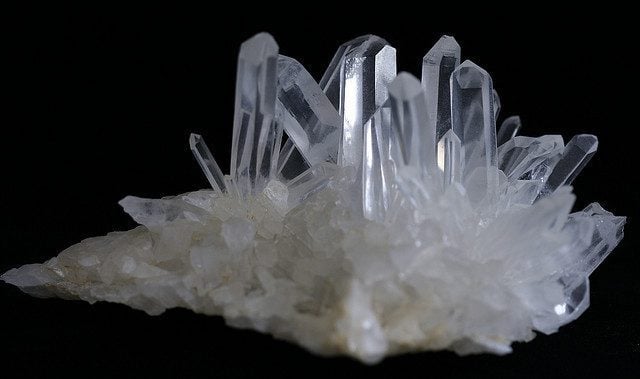What is a Crystal?
Learn the scientific definition of crystal used by gemologists and answer some basic questions about what is and is not a crystal.
2 Minute Read
Crystal Systems
All minerals form in one of seven crystal systems: isometric, tetragonal, orthorhombic, monoclinic, triclinic, hexagonal, and trigonal. Each is distinguished by the geometric parameters of its unit cell, the arrangement of atoms repeated throughout the solid to form the crystal object we can see and feel.
For example, an isometric or cubic crystal has a cube as its unit cell. All its sides are equal in length and all its angles are right angles. Well-known gems in this system include diamonds, garnets, and spinels.
On the other hand, a triclinic crystal has all sides of different lengths and none of its angles are right angles. These geometric variations mean triclinic crystals can take on many intricate shapes. Well-known gems in the triclinic system include labradorite and turquoise.
Non-Crystalline Solids
Some objects may appear to be crystals to the naked eye, but outward appearances can be deceiving. For gemologists and mineralogists, the atomic structure of the object is the determining factor. Not all objects with regular geometric faces are crystals, nor are all solid materials crystals.
Amorphous Solids
Glass, for example, has a non-crystalline, amorphous atomic structure. Although glassmakers can pour and harden glass into geometric shapes, its atomic structure remains unchanged.
Polycrystalline Solids
Water that hardens into a single large snowflake is, in fact, a crystal. It crystallizes as it cools, freezes, and moves through the atmosphere.
However, water that hardens into a cube in your freezer's ice tray isn't a crystal. Ice cubes, rocks, and common metals are examples of polycrystalline materials. They may contain many crystalline objects. (In the case of ice cubes, they may contain actual ice crystals). Nevertheless, you can't describe the entire ice cube as having a uniform crystalline structure.
Cryptocrystalline or microcrystalline rocks consist of microscopic crystals, but, again, those rocks lack a uniform crystalline structure. Some cryptocrystalline materials, such as chalcedony, find use as gem materials in jewelry or decorative objects.
The Origins of Crystals
Most crystals have natural origins. They can form through inorganic means, such as geological processes within the earth. Others form through organic processes within living creatures. For example, some human kidney stones consist in part of weddellite crystals.
Laboratories can also create crystals artificially. For example, cubic zirconia, a synthetic gem material, forms with a cubic crystal structure when zirconium and zirconium dioxide are superheated. The resulting material commonly finds use as a diamond imitation or simulant.
International Gem Society
Related Articles
Guide to Organizing Your Gemstone Collection
A World of Crystals
A Guide to Gem Cutting Styles
What is Gemstone Birefringence?
Latest Articles
800 Years of Mogok: A Celebration in Tenuous Times
What is the Average Gemstone Faceting Yield?
Pyroxmangite Value, Price, and Jewelry Information
How to Identify Emerald Simulants and Synthetics
Never Stop Learning
When you join the IGS community, you get trusted diamond & gemstone information when you need it.
Get Gemology Insights
Get started with the International Gem Society’s free guide to gemstone identification. Join our weekly newsletter & get a free copy of the Gem ID Checklist!
